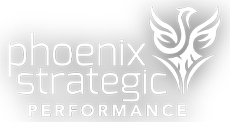Leadership Landscape: Identifying & Understanding the Subtleties of Transition Leadership
Today, we are experiencing unprecedented change in ways we could not have imagined. One day, life was normal, and the next day we were dealing with a ‘new normal’ for which there was no blueprint. This is discontinuous change at its finest. During this time, change leadership skills are more important than ever before. Managing people whom you will need to bring with you on the change journey and critical thinking through your business operations that need to adapt to our new VUCA reality are the ‘new normal.’ This is the new reality. Our old reality is gone.
The Internal People Side of Change Management: Transition Leadership and the Change Trajectory
Transition Leadership: Dealing with how employees transition through the phases of change.
Transition Leadership focuses on the people side of change management. Transition Leadership requires the leader to go far beyond the processes used in change management to the gray area dealing with employees’ emotional reactions and responses to change. Here the leader must fully understand the psychology of how change impacts the organization at the individual level.
Transitioning Through the Change Trajectory
As leaders, you are often in the information exchange around the change event early in the process. You have had time to process the change, understand the implications, and often arrive at a commitment to change before the rest of the organization may even be aware of the change. You need to appreciate that your journey may not be the same for the people you are leading. Leaders are known to speed through the change trajectory at a much faster pace than their subordinates. Leaders must recognize this potential lag time in both speed and acceptance of change as change descends through the rest of the organization.

Identifying the Four Transition Phases of the Change Trajectory at the Employee Level
- Denial Phase and Employee Denying Behaviors
- Avoid speaking about the change
- Appear unconcerned
- Focus on routine work only
- Focus on the past to present
- Resisting Phase and Employee Resistance Behaviors
- Struggle with the present and show frustration or anger
- Complain and blame others
- Become passive
- Become overwhelmed
- Over focus on the change
- Analyzing Phase and Employee Analysis Behaviors
- Experiment with new ideas
- Start thinking of future goals
- Begin to get work done
- Start to take initiative
- Take risks
- Accepting Phase and Employee Acceptance Behaviors
- Have a feeling of control
- Feel comfortable and relaxed
- Appreciate the journey
- Become future-focused and proactive
- Feel a sense of accomplishment
Beware of Change Management Roadblocks
Change management can hit some major roadblocks at the individual level when transition leadership is not incorporated at the same time. Leaders can wrongly assume that everyone ‘is on the same page.’ Often this couldn’t be farther from reality. Remember, your transition leadership style must synch with where individuals are along the phases of the Change Trajectory. At the individual employee level, change becomes personal, emotional, and highly subjective. Here is where Maslow’s Needs Hierarchy needs to be understood. This is where transition leadership skills are soft, messy, and confusing. There are no easily defined process checklists.
Leaders must know and understand the psychological and individual responses caused by change. Leaders must first have a profound understanding of themselves and then be equally dedicated to understanding and accounting for transition management on an individual, group, and divisional level within the organization.
Leaders, It’s Time To Put On Your Psychology Hat!
We know that change can cause many different reactions in an organization. Change equals uncertainty. Uncertainty activates the brain to perceive a threat (the fight or flight reaction). As a leader, do whatever you can to reduce the risks associated with this perceived threat caused by the change event. We often hear that change will only happen if your people are robustly involved in and comfortable with the process. For change management to be efficient and effective, you must simultaneously lead with both a change management process and transition leadership. Learn more about leadership, management, and organizational assessments to help your employees through this transition process.
If you're looking to see how can help your employees transition through the phases of change, we invite you to download our change management case study.





